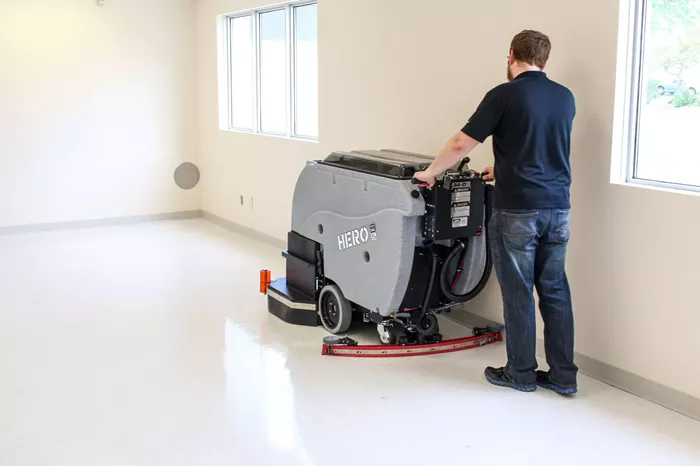Scrubbers play a vital role in maintaining air and water quality. They are used in various industries to control emissions and reduce pollutants. Understanding the types of pollutants scrubbers can remove helps in selecting the appropriate technology for specific needs. This article explores the different pollutants that scrubbers target, their mechanisms of action, and their importance in environmental protection.
Introduction to Scrubbers
Scrubbers are devices designed to remove harmful substances from gases or liquids. They work by using a scrubbing liquid, typically water or a chemical solution, to capture pollutants. This process helps reduce environmental impact and ensures compliance with regulations. Industries such as power generation, chemical manufacturing, and waste management utilize scrubbers extensively.
How Scrubbers Function
Scrubbers operate on the principle of mass transfer. They involve the interaction between the pollutant and the scrubbing solution. As the gas or liquid flows through the scrubber, it comes into contact with the scrubbing medium. This contact leads to the absorption or reaction of pollutants, resulting in cleaner emissions. The effectiveness of a scrubber depends on factors such as design, type of scrubbing solution, and flow rates.
Types of Pollutants Removed by Scrubbers
Scrubbers are effective at removing various pollutants. Understanding these pollutants helps in assessing the necessity of scrubber systems for specific applications.
Particulate Matter
Particulate matter, or PM, refers to tiny solid or liquid particles suspended in the air. These can include dust, soot, and smoke. Scrubbers are highly effective in removing particulate matter from industrial emissions. The scrubbing liquid captures the particles, preventing them from entering the atmosphere. This is crucial for reducing respiratory diseases and improving air quality.
Sulfur Dioxide
Sulfur dioxide (SO2) is a significant air pollutant produced during the combustion of fossil fuels. It contributes to acid rain and can harm human health. Scrubbers, particularly wet scrubbers, are used to remove sulfur dioxide from exhaust gases. The scrubbing solution typically contains alkaline substances, which react with sulfur dioxide to form sulfites or sulfates. This process significantly lowers SO2 emissions and helps meet environmental standards.
Nitrogen Oxides
Nitrogen oxides (NOx) are another group of harmful pollutants emitted from vehicles and industrial processes. They play a role in forming ground-level ozone and contribute to respiratory problems. Scrubbers can effectively reduce nitrogen oxides from exhaust gases. They often utilize specific chemical reactions to convert NOx into less harmful compounds, such as nitrogen gas and water vapor.
Volatile Organic Compounds
Volatile organic compounds (VOCs) are organic chemicals that can evaporate easily into the air. They are found in many industrial processes and products, including paints, solvents, and fuels. Scrubbers can capture VOCs by using absorbent scrubbing liquids. The effectiveness of scrubbing systems in removing VOCs varies based on the type of scrubbing solution and the characteristics of the VOCs present.
Ammonia
Ammonia (NH3) is a colorless gas with a pungent odor, often found in agricultural and industrial emissions. It can contribute to air pollution and cause environmental issues like eutrophication. Scrubbers can effectively remove ammonia from gas streams by using acidic scrubbing solutions. The ammonia reacts with the acid, forming ammonium salts that can be safely disposed of.
Heavy Metals
Heavy metals, such as lead, mercury, and cadmium, are toxic pollutants that can have severe health effects. Scrubbers can capture these metals from industrial emissions. The process usually involves using scrubbing solutions that can chemically bind with the metal ions, preventing them from being released into the environment. Proper handling and disposal of the collected heavy metals are essential to avoid contamination.
Hydrogen Chloride
Hydrogen chloride (HCl) is a corrosive gas that can cause respiratory issues and environmental damage. It is often emitted from industrial processes involving chlorine or hydrochloric acid. Scrubbers are effective at removing hydrogen chloride by using alkaline scrubbing solutions. The HCl gas reacts with the alkaline solution to form harmless salts, reducing the harmful impact on the environment.
Carbon Dioxide
While carbon dioxide (CO2) is a natural component of the atmosphere, excessive emissions contribute to climate change. Some advanced scrubbers are designed to capture CO2 from industrial processes. They typically utilize chemical absorption techniques, converting CO2 into a more manageable form for storage or reuse. This technology plays a crucial role in efforts to reduce greenhouse gas emissions.
see also: What Does a Walk-Behind Floor Scrubber Do?
Benefits of Using Scrubbers
Implementing scrubbers in industrial processes offers several benefits. They not only help meet regulatory requirements but also improve overall environmental performance.
Improved Air Quality
By removing harmful pollutants from emissions, scrubbers significantly contribute to improved air quality. This leads to better health outcomes for the community and reduced healthcare costs associated with pollution-related illnesses.
Regulatory Compliance
Many countries have stringent regulations regarding air and water quality. Scrubbers help industries comply with these regulations by reducing emissions of harmful substances. This compliance is essential for maintaining operational licenses and avoiding penalties.
Enhanced Public Image
Companies that invest in pollution control technologies, such as scrubbers, demonstrate a commitment to environmental responsibility. This can enhance their public image and attract customers who prioritize sustainability.
Conclusion
Scrubbers are essential tools in the fight against pollution. They effectively remove various pollutants, including particulate matter, sulfur dioxide, nitrogen oxides, volatile organic compounds, ammonia, heavy metals, hydrogen chloride, and carbon dioxide. Understanding the types of pollutants that scrubbers can remove is crucial for industries aiming to improve air and water quality. By investing in scrubber technology, companies can enhance public health, comply with regulations, and foster a cleaner environment for future generations. As technology advances, the efficiency and effectiveness of scrubbers will continue to improve, further contributing to environmental protection efforts worldwide.
Related topics:


